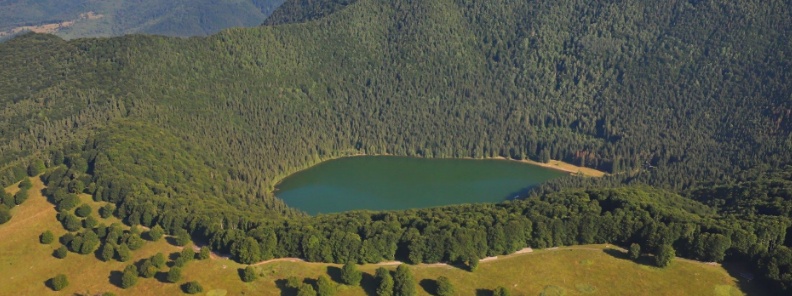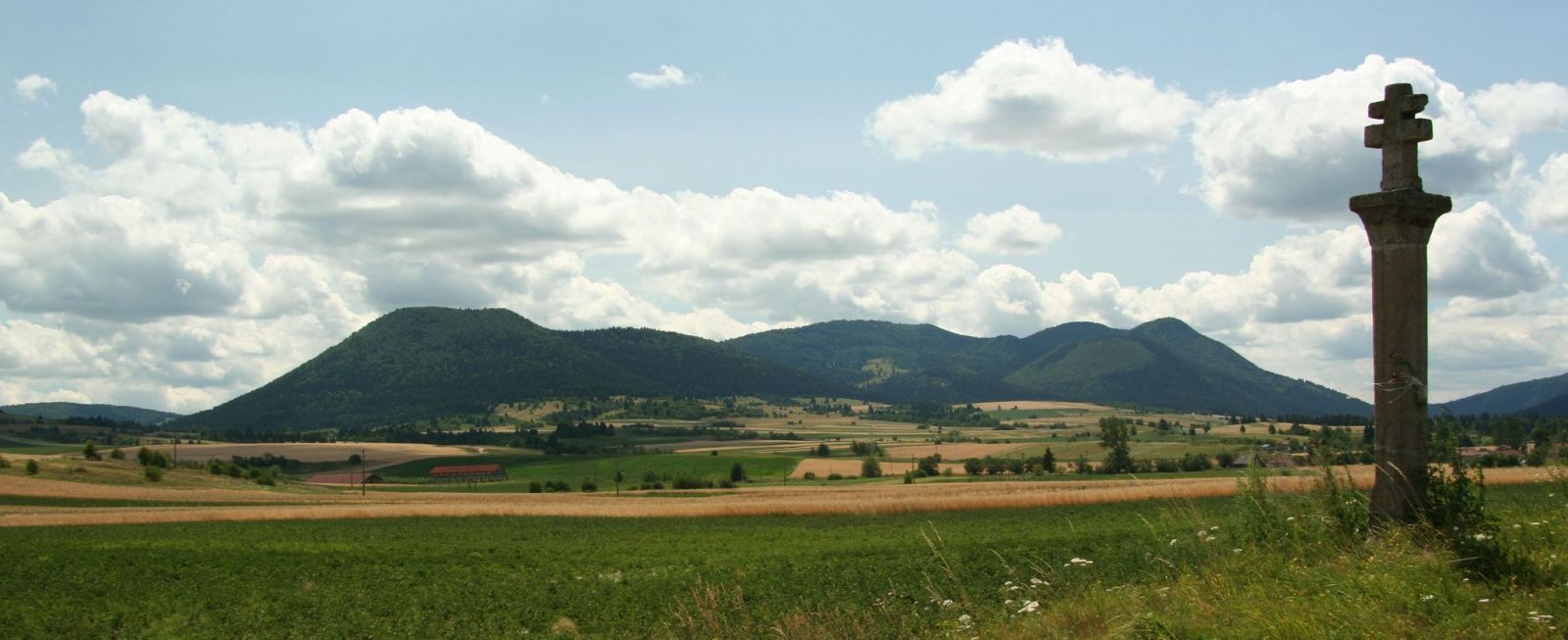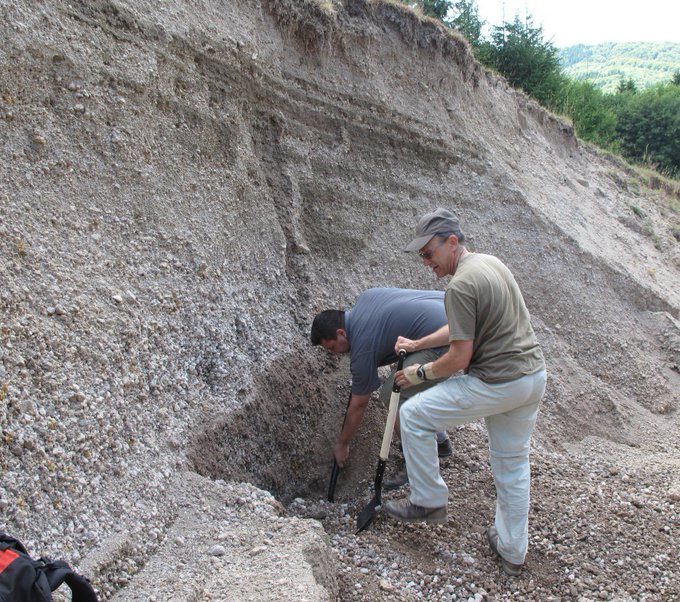Proof of magma reservoir beneath seemingly inactive Ciomadul volcano, Romania

The rocks in the upper crust of seemingly extinct Ciomadul volcano in Romania are 15% molten and in some regions up to 45%, a new study finds. That a seemingly dead volcano like Ciomadul is actually capable of erupting in the future calls for renewed attention to 'inactive' volcanoes worldwide and perhaps for a redefinition of their activity/inactivity status, study authors said. The last eruption of this volcano occurred about 30 000 years ago.
Ciomadul, located in eastern-central Europe is an excellent example of a seemingly inactive volcano, because its eruption chronology shows long quiescence periods between active phases, with its last eruption occurring around 30 000 years ago. It consists of fairly homogeneous high-K dacites, but contains complexly zoned crystals of plagioclase, amphibole and biotite.
According to a study published recently in Earth and Planetary Science Letters, the volcano may still hold 20 – 58 km3 (5 to 14 mi3) of water-rich silicic melt, constituting up to 20-58% in parts of the upper crustal crystal mush body. Such a melt volume exceeds the volume of erupted lava over the entire history of the volcano.
This illustrates the important longevity of a magmatic reservoir at temperature above the solidus, which implies that there is still a potential for rapid mush rejuvenation, researchers said.

Image credit: Szabolcs Harangi (used with permission)
From experiments and thermal calculations, the researchers demonstrate that Ciomadul magmatic system could locally contain significant amount of melt with relative fraction close to the eruptible state in some regions. Such magma storage conditions can exist even beneath relatively small volcanic complexes.

Image credit: Szabolcs Harangi (used with permission)
As long as melt-bearing magma body can be inferred beneath such long-dormant volcanoes, the potential for rejuvenation exists, irrespective of the length of its quiescence time and this calls for more attention to apparently inactive Potentially Active Magma Storage (PAMS) volcanoes.
"At present, there is no sign for an imminent eruption," study co-author Szabolcs Harangi said.
"Our study shows this that these long dormant volcanoes behave similarly as the active ones: they could have been underlain by active magma storage – that is why we suggested the PAMS volcano term for those volcanoes that erupted last time more than 10 000 years ago, but there are observations that they have still melt-bearing potentially active magma storage! The melt is important, this is what yields a potential for future reactivation and as we can see this reactivation could be really fast."
Anatomy of an apparently inactive volcano: #Ciomadul in eastern-central Europe. After our paper in the EPSL (Laumonier et al), here you go another one about the isotopic content of the emitted CO2 gases (https://t.co/0MJrmNsm84). Eruption chronology and repose time: JVGR Vol. 373 pic.twitter.com/fP1HvQyO5X
— Szabolcs Harangi (@szharangi) June 30, 2019
About #Ciomadul, an apparently inactive volcano erupted last time 30 ka, but our study suggests there are still quite a lot of magma beneath it and more attention is needed for such long dormant volcanic systems! https://t.co/KdW7g7cFsc
— Szabolcs Harangi (@szharangi) July 17, 2019
Reference:
"Evidence for a persistent magma reservoir with large melt content beneath an apparently extinct volcano" – M.Laumoniera, O. Karakas, O. Bachmann, F.Gaillard, R.Lukács, I. Seghedi, T.Menand, S.Harangi – Earth and Planetary Science Letters Volume 521, 1 September 2019, Pages 79-90 – https://doi.org/10.1016/j.epsl.2019.06.004
Abstract
Most active volcanoes display eruption frequencies of 10-1000s years but a class of volcanic systems has extremely long repose-time (>10's kyr), and are deemed as extinct. Yet, some reawaken, posing a particular threat because little is known about the way they endure and stir back to life. Reawakening primarily depends on the nature of the subvolcanic magma reservoir, especially the presence and distribution of melt. Here, we integrate petrology, thermobarometry, thermomechanical models, geophysics and in situ electrical conductivity measurements to show that the magma storage beneath Ciomadul, a seemingly inactive volcano in eastern-central Europe that last erupted 30 ka, may still hold 20 to 58 km3 of water-rich silicic melt, constituting up to 20-58% in parts of the upper crustal crystal mush body. Such a melt volume exceeds the volume of erupted lava over the entire history of the volcano. This illustrates the important longevity of a magmatic reservoir at temperature above the solidus, which implies that there is still a potential for rapid mush rejuvenation. That a seemingly dead volcano like Ciomadul is actually capable of erupting in the future calls for renewed attention to “inactive” volcanoes worldwide and perhaps for a redefinition of their activity/inactivity status.
Featured image credit: István Fodor

Commenting rules and guidelines
We value the thoughts and opinions of our readers and welcome healthy discussions on our website. In order to maintain a respectful and positive community, we ask that all commenters follow these rules.